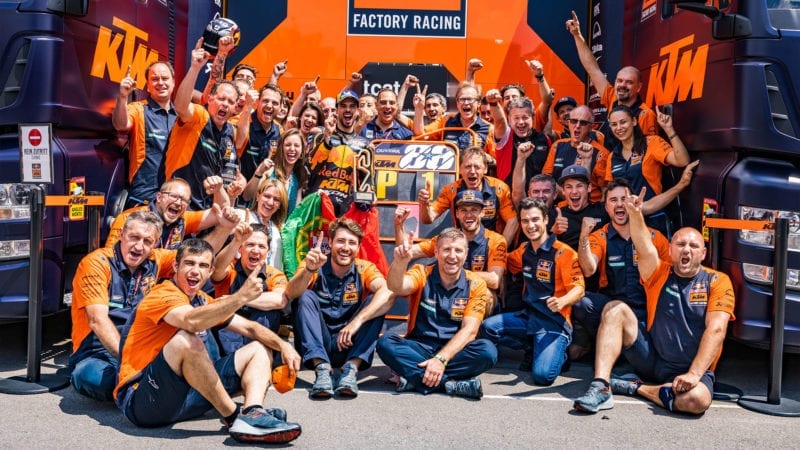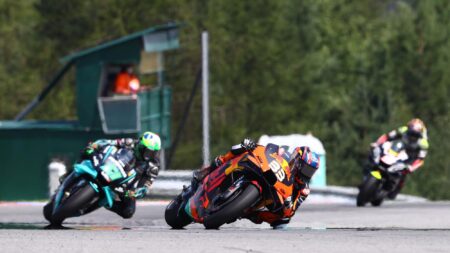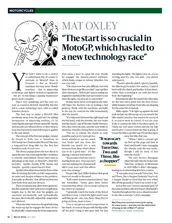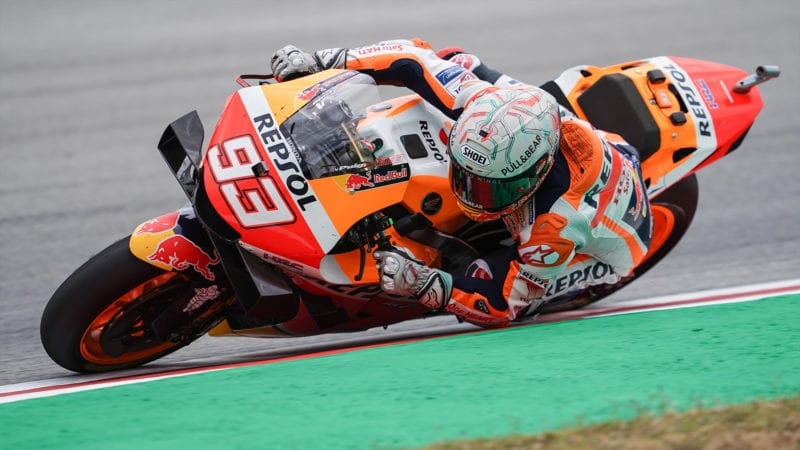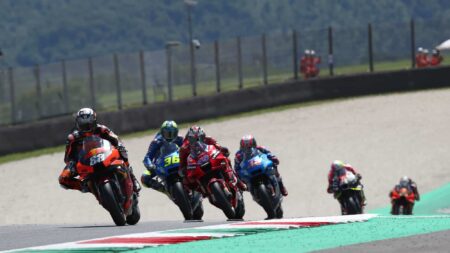Risse and team-manager Mike Leitner were very impressed with how Oliveira extracted the maximum from the hard asymmetric, without falling victim to the tyre.
The tricky point of Michelin’s asymmetric front tyres is the transition between the two compounds. If the rider doesn’t understand that and learn how to deal with that he will be slow or he will crash.
“It’s all about in which load phase you go over the transition, whether you’re already on the brakes or if you start to brake or if you’re in the middle of a quick change of direction,” explained Risse.
“It’s not easy for the riders to understand the asymmetric and treat it correctly,” added Leitner. “The rider must treat the tyre in a good way to keep its performance throughout the race. These tyres are very sensitive to overloading, to temperature, to the load the rider gives to the tyre and the way he loads the tyre. One thing is the bike set-up and the other is the rider who has to be very smart to manage the tyre. What Miguel showed today is that he’s a very good and a very smart MotoGP rider.”

Oliveira leads Quartararo, Zarco and the rest at Catalunya
KTM
“But MotoGP is so competitive and so complicated at the moment – one small weak point and you are out of the game, so we have to see how our bike and the tyres fit the next tracks.”
On Sunday the KTM was the best bike in the race: good on the brakes, enough corner speed to stay with the Yamaha and, crucially, enough top speed to make the winning overtake on the start/finish.
“Both Mugello and Catalunya were very difficult tracks for us in past, also Brno, which last year was a great success for us,” added Risse. “We have great riders and they can make a lot out of the bike and if we get the bike right I think we can be competitive anywhere. However, we have to be very careful about any expectation for the coming tracks. Here we made the asymmetric work, but only the future will prove if we have found a general way to make tyre work or if the last two races were specific cases.”
The results of the last two races certainly suggest that KTM has developed a V4 that has all the advantages of a V4 – straight-line speed and excellent braking performance – without losing out to the inline-fours in cornering speed.
